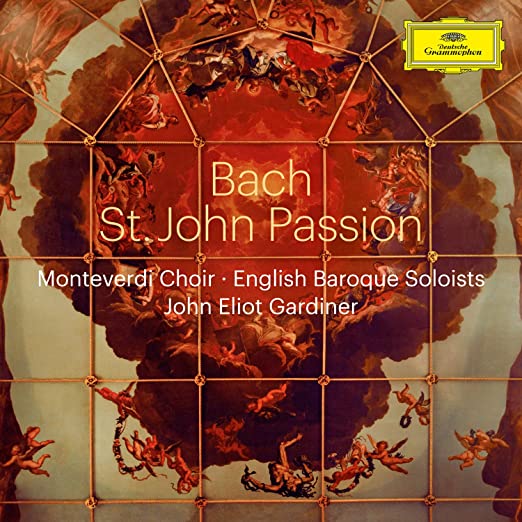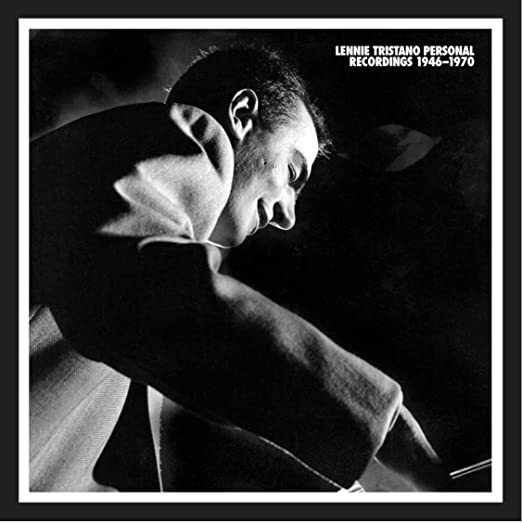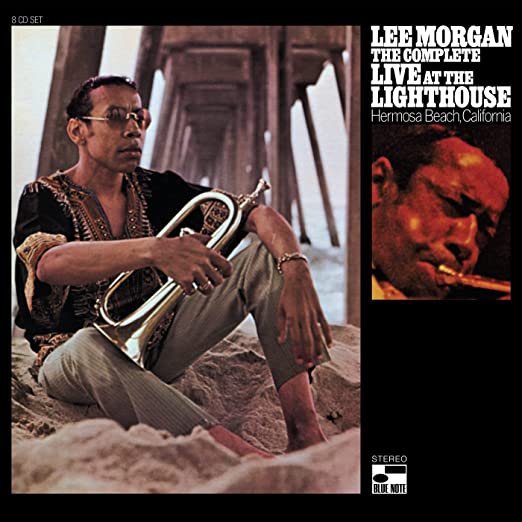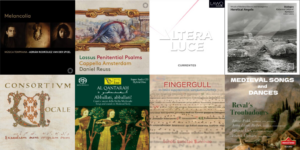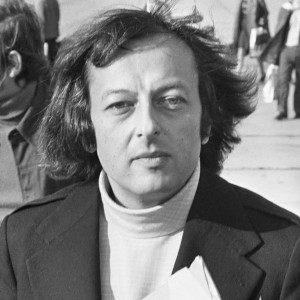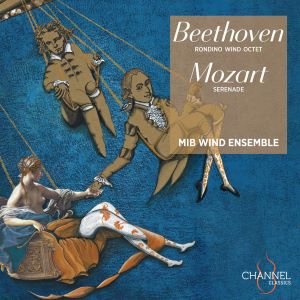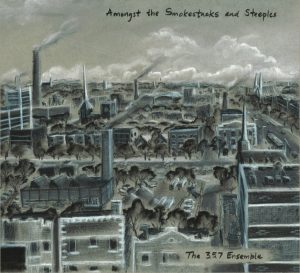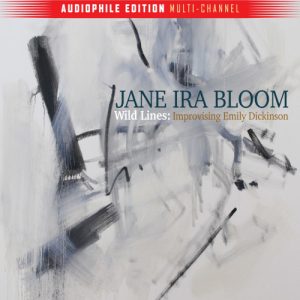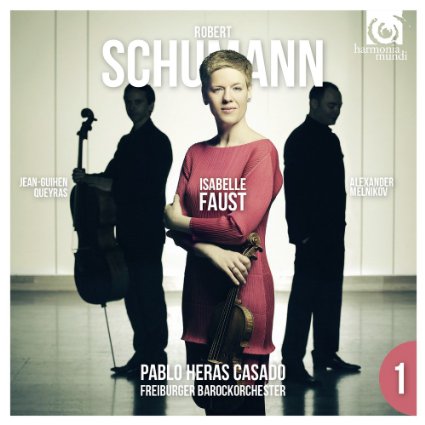
Robert Schumann, Violin Concerto; Piano Trio No. 3. Isabelle Faust, violin; Jean-Guihen Queyras, cello; Alexander Melnikov, piano. Harmonia Mundi. HMC 902196. CD & DVD.
At some point in record collectors' lives they find themselves looking for musicians as much as for music. I have all of the Schumann I 'need'—but when I saw these three increasingly associated musicians beginning what will be a three CD set of the composer's music for violin, cello, and piano, I jumped. Each has done truly great work on his and her own (Bach, Britten, Shostakovich, Bartok) and in pairs (Bach, Beethoven). So here they are on three lesser known late works of Schumann.
The Piano Trio No. 3 is a curiously low key work for the composer and the Faust-Queyras-Melnikov trio accept its essential quality and look for the poetry in it, using instruments appropriate for the time (1851) which contribute to the intimate quality of the performance.
The Violin Concerto (1853), never heard during the composer's lifetime (not until 1937!), is played by Faust with the period Freiburg Baroque Orchestra and shares the principal qualities of the piano trio. There is drama, but as with the smaller work it is essentially subsumed in a thoughtful narrative, which may account for the long delay in its premiere. Apparently its dedicatee, who inherited the work from Schumann on his death in 1855, felt the work was not truly representative of the composer's best known voice and style. He was mainly right: it is the expression of a more mature man, who had begun to hear the next musical era in his last years. You can play this music lean and boring or bold and overblown. I've heard it both ways. Faust hears late Schumann clearly and gives him to us searching, meditative, lyric, and clear; and Pablo Heras-Casado and the Freiburgs are with her all the way. This is a intelligently conceived album and a promising beginning for the three disc project.
The DVD of a live performance of the violin concerto is more than a nice bonus. It is wonderfully produced—the camera men clearly have scores and know how to read them. It reminds us how large a role the visual element of a musical performance can play in its enjoyment.
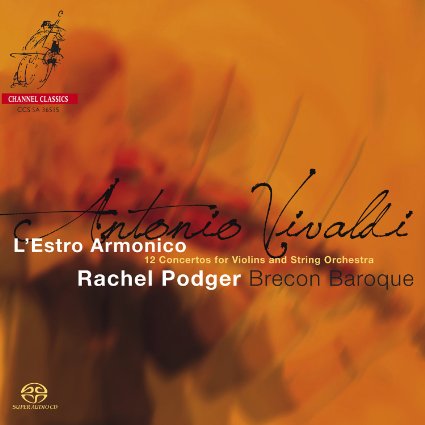
Antonio Vivaldi, L'Estrico Armonico. Rachel Podger, Brecon Baroque. Channel Classics. CCS SA 36515
This release of what some of us consider Vivaldi's best music, comes trailing clouds of glory in its wake—namely Podgers's wonderfully exuberant 2003 CD of the composer's La Cetra. I used to put that album on at audio shows to remind audiences that shows don't have to be about bad music coupled with showcase quality sound.
L'Estrico Armonico (Opus 3) is the true heart of Vivaldi's genius. When the late Christopher Hogwood and his Academy of Ancient Music released their version on vinyl in 1981, it was so great I bought two copies as insurance against scratches and theft! Hogwood combined beauty and enthusiasm, not to mention glorious analogue sound, so perfectly it is hard to imagine his recording being surpassed. And knowing Rachel Podger as we do, it needn't be. It just needs to be as good as her La Cetra and we'll all go home happy.
As expected, Podger and her people are less refined and more earthy than Hogwood and his, but the difference is not huge. She herself, in her solos on eight of the concertos, is recognizably spirited—and exquisitely beautiful on the largos and larghettos. This is her band, made up partly of her former students, partly veterans like herself—like cellist Alison McGilivrey. And even when she passes solos to her students (Bojan Cicic, Johannes Pramsohler) on four of the concertos, the overall character and quality of the performances remain consistent.
There are only eleven musicians playing here, presumably the number the work is scored for as Hogwood also uses eleven; and we hear all of them! This is, after all, a Jared Sacks recording, and he doesn't want us to miss a thing. We get the instruments and we also get the warm acoustic of St. John the Evangelist Church, Upper Norwood, London. The whole thing has the reverberant and intimate feel of chamber music.
I am avoiding the most important point to make here, as I listen and wait until it's time to say it—and until my system is totally warmed up. To wit, there is something about a Rachel Podger performance that sets it apart from all others. It is not something is easy to analyze or even to characterize. When technique is perfected, the very few find a way to go beyond it. With Podger, from a firm and perfect foundation something rises. In this case she brings her fellow musicians with her as she rises. And Vivaldi depends on this. Hogwood gets some of this—and I just replayed him to remind myself how much. In his case it is 'celestial.' In Podger's case, the earth rises with her, which is what I meant by "earthy" above. Everything rises...and so we rise.
That's the best I can do with this. Podger remembers the first period instrument release of Vivaldi from Trevor Pinnock and the English Concert, which was as bracingly exciting 'live' as it was on the CRD LP. She recaptures its spirit but infuses it with more grace and Italian elan. This is the first major recording of 2015, jump on it.
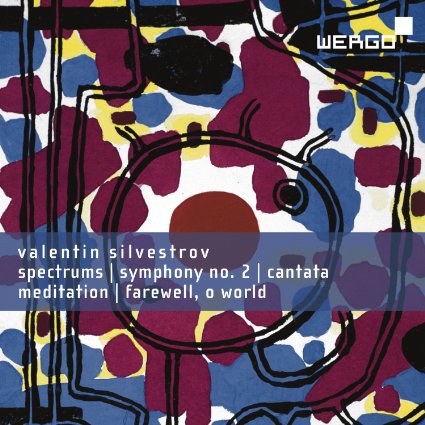
Valentin Silvestrov, Spectrums; Symphony No. 2; Cantata; Meditation [for cello and orchestra]; Farewell, O World..! Kiev Chamber Orchestra and others, Igor Blazhkov. (live recording) Wergo, WER 6731.
Those who are accustomed to the spare, suggestive, spiritual sound of modernist Russian composer Valentin Silverstrov (b. 1937) will be surprised by this album of his early (mostly 1960's) uncompromisingly stark avant-garde works. Even the Meditation for cello and orchestra is a pretty wiry affair, the cello hard to find amongst the brambles. In a word, this is briar patch music which will test the enthusiasm some of us bring to the most challenging modern music.
Interestingly, the Cantata (1973) and Farewell, O World (1974, 1991), the latter rearranged by conductor Blazhokv to celebrate the (then) new independence of the Ukraine (!) to my ears are the most affecting works on the album, more suggestive of Silverstrov's later, better known work. The Cantata in particular is very powerful and eloquent music.
I admire Wergo for their loyalty to this estimable composer and will give this album the rest of the spring to win me over.
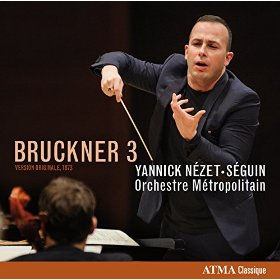
Bruckner 3, Yannick Nézet-Séguin, Orchestre Métropolitain. Atma Classique ACD2 2700.
My track record for picking winners to review is very damn good, especially when an album's predecessors have impressed me. Nézet-Séguin's previous Bruckner recordings have all been head-turners for me. They have quite frankly persuaded me that Bruckner is to be taken more seriously (and enjoyed) than I'd previously thought. But this new recording of Symphony No. 3, both as a performance and a recording, is disappointing. I've listened to it three times now and will give it one more go, trying to allow for shortcomings in the listener. I've no idea what accounts for the lack of inspiration on the part of both conductor and recording engineer here. It would appear Nézet-Séguin has taken his muse south to Philadelphia, where he is now music director. Just a few minutes with Gunter Wand and the NDR Symphony Orchestra on their 'live' RCA disc will tell you what's missing here.
Equipment used for this audition: Resolution Cantata CD player/music center; Crimson 710 preamplifier; Blue Circle NSP stereo amplifier; Jean Marie Reynaud Offrande Supreme,V2 loudspeakers; Crimson cabling; Volex power cords.
Bob Neill is a former equipment reviewer for Enjoy the Music and Positive Feedback. Since 2004 he has been proprietor of Amherst (MA) Audio, which sells equipment from Audio Note (UK), Blue Circle (Canada), Crimson (UK), Jean Marie Reynaud (France), Resolution Audio (US), and Tocaro (Germany).




